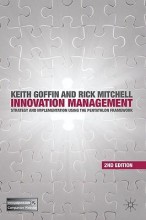Summary: Chapter 13 Prejudice: Causes And Cures
- This + 400k other summaries
- A unique study and practice tool
- Never study anything twice again
- Get the grades you hope for
- 100% sure, 100% understanding
Read the summary and the most important questions on Chapter 13 Prejudice: Causes and Cures
-
1 Chapter 13 Prejudice: Causes and Cures
This is a preview. There are 47 more flashcards available for chapter 1
Show more cards here -
Of what 3 things is a prejudice made up of?
1. affective/emotional component (what you feel with the attitude), emotions
2. cognitive component (beliefs and thoughts), stereotypes
3. behavioural component (how you act on your prejudice), discrimination -
What is meant when it is said that stereotyping is 'the law of the least effort'?
The world is too complicated for us to have a highly differentiated attitude about everything, we only develop accurate attitudes about a few of the topics, and keep sketch-like ideas in our head about the others. -
What are the 2 types of sexism?
1. Hostile sexism (negative stereotypes of a certain gender)
2. Benevolent sexism (positive stereotypes of a certain gender) -
In which component of attitude does stereotype fit?
The cognitive process; it's a technique we use to simplify how we look at the world. -
What is social distance?
A person's reluctance to get 'too close' to another group. -
What is modern racism?
Outwardly acting unprejudiced while inwardly maintaining prejudiced attitudes. -
What is the bogus pipeline?
A fake lie-detector that could be manipulated to show either true or false. When participants thought the lie detector would reveal their lies anyway, they were more inclined to show prejudice than when they were simply filling out a questionnaire. It revealed their implicit prejudices. -
What is the critique on the IAT?
That it doesn't measure stable prejudice. This because:
1. The IAT does not measure emotional evaluations of the target faces, but the salience of the word associated with it. And because negative words stand out more, these are easier.
2. It may measure the unfamiliarity with certain concepts (e.g. of white people with African American expressions), and the greater salience of other concepts (e.g. whites with white faces). -
What is the best way to measure implicit prejudices?
See how a person really responds in a situation when they lack the energy or time to make a controlled, reasoned decision. So when they're stressed, etc. -
Why is it hard to change people's mind about their prejudice with rational, logical reasons?
1) It's the emotional aspect of attitudes -> logical arguments are not effective when countering with emotions
2) An attitude tends to organise the way we process relevant information about the targets of that attitude.
--> Information consistent with the attitude will be remembered better than information that contradicts the attitude.
- Higher grades + faster learning
- Never study anything twice
- 100% sure, 100% understanding

































